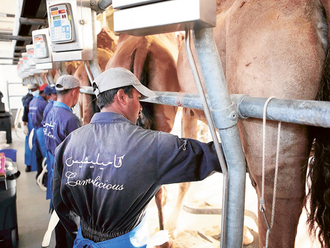
With Valentine’s Day around the corner you might not be thinking love and romance but how to pay the credit card bill at the end of the month. A back of the napkin calculation may show that February 14 could end up costing you anything from Dh4,000 upwards. Dinner deals for two are Dh1,000 and more, plus chocolates, flowers, cab fare and jewellery, and before you know it, you’ve blown a quarter of your month’s salary.
We would like to believe that love is not tainted by commerce, but the truth is there is an indelible link between the two; a connection that behavioural economists and psychologists have recently been exploring more closely.
The research
Last year, Marina Adshade, Professor of Economics at the University of British Columbia, released her provocative work entitled, Dirty Money: The Economics of Sex and Love, in which she presents an interesting case about how all romantic behaviour can be understood along economic lines. The insights are based on research that Adshade compiled over three years. She challenges the common belief that humans have developed socially over time, instead showing that we usually behave in our best economic interests.
Agreeing with Adshade, Dr Raymond H. Hamden, a clinical and forensic psychologist and Director of the Human Relations Institute & Clinics in Dubai — who is also dubbed Dubai’s mental health pundit — tells GN Focus, “In a society like ours, money is power and our world is increasingly influenced by materialism.” According to Dr Aaron Ben-Zeév, author of In the Name of Love, there are similarities between romantic and commercial behaviour. “For instance, people today select romantic partners in the same way that they buy commodities, focusing on features and attributes that are unrelated to love,” he writes.
Economic principles
Today, economists are studying a pragmatic view of love and relationships that strips away any emotion and looks at economic principles such as opportunity costs. So why are we ashamed of acknowledging this association?
“We like not to think of love and money in conjunction with each other, but even going out on a date involves an economic question; who is going to pay? And the one who pays for dinner actually influences the relationship because it is part of an economic underlined structure,” Dan Ariely, Professor of Psychology and Behavioural Economics, Duke University, tells GN Focus.
Ariely goes on to explain that in a relationship, we pay with other things and not with money directly. “This is because money has a way of pushing away social motivation, which is why we are so careful about introducing economic activity into romantic relationships.”
The economics of love is serious business. In 2006 and 2007, leading global analytics firm Gallup asked people in 136 countries how and when they experienced love, and last year Bloomberg published an article based on the findings. The research showed that those with higher household incomes were more likely to experience love. The correlation, points out Ariely, occurs because individuals with more money are perceived as being more desirable. And we all know that being desired is the greatest aphrodisiac in the world.
Hamden on the other hand believes that love for money and healthy relationships often do not coexist. “Materialism takes away valuable time from other important pursuits in a person’s life. As time and resources are spent on obtaining material things, relationships are neglected,” he says.
Global trends
So what is the price of love in different parts of the world? “The Far East heads the league, with men spending on average Dh1,006 on their partners on Valentine’s Day. Germany hits the bottom of the list, with an average spend of Dh345. In the GCC, the figure is Dh617 on average,” says Nick Clements, CEO, BPG Bates. The data is provided by BPG Maxus, a global media planning and buying agency.
The typical Valentine’s Day spending pie shows that greeting cards account for 52 per cent, flowers for 34 per cent and confectionary 48 per cent. Last year, in the week leading up to Valentine’s Day, television, print, outdoor and radio advertising increased by 10 per cent, says Clements, while advertising in the jewellery and watch category saw an increase of 200 per cent.
If there was ever a doubt about the connection between love and commerce then the figures estimated by the National Retail Federation in the US will clear it. Last year, spending for the day of love was estimated to reach $18.6 billion, with Americans spending on average $130.








